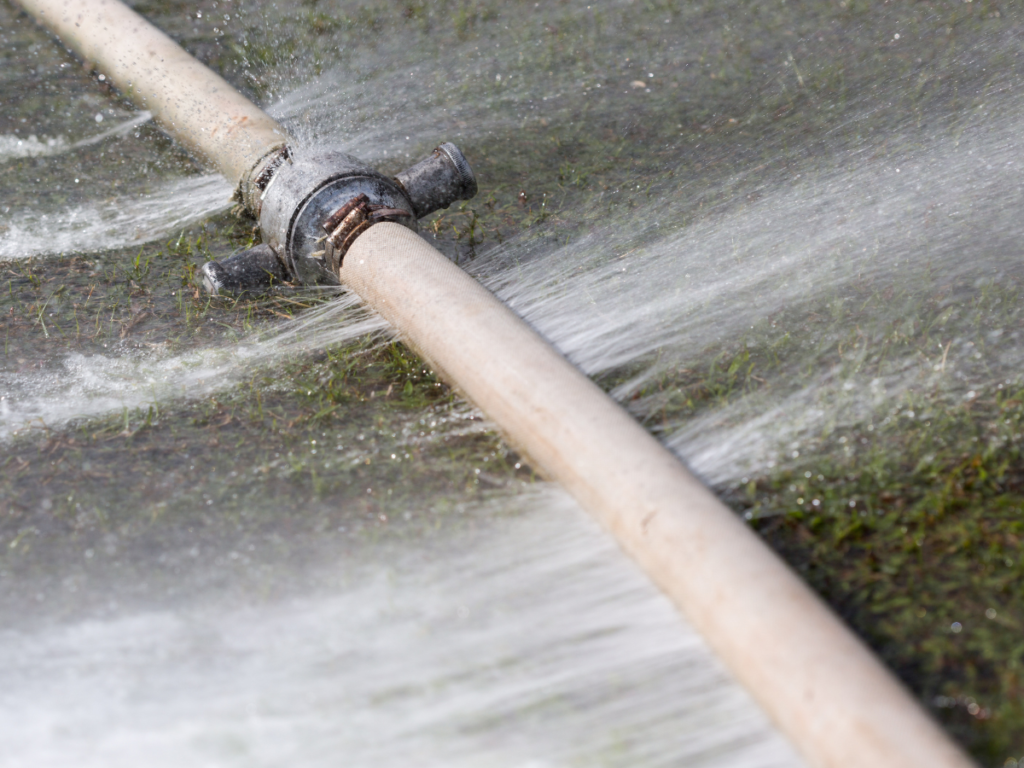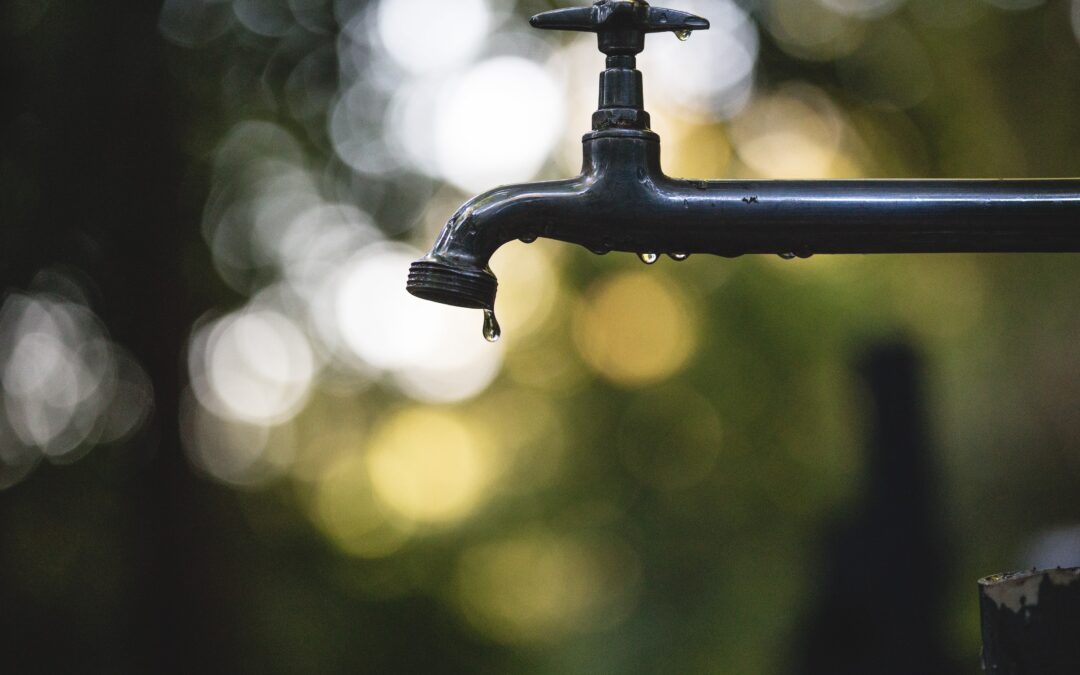As a vital resource, knowing how to control water flow into your home or business will help avoid damage, allow you to conserve water, and maintain a safe environment. In this comprehensive guide, we will walk you through turning off your water supply step-by-step when you’re experiencing a water line problem.
Step 1: Identify the Water Shut-Off Valve

Find the location of the water metre, commonly found at the front of your property. A metal or plastic cap typically covers the water metre box. In some cases, where your home has access to recycled water, there may be two water metre boxes.
Knowing where your water metres are ahead of time will help relieve any panic or uncertainty during a plumbing emergency. Different types of homes will see the variation in the location of the water main:
- Stand-alone home: The water main is usually at the front of the home, usually in a garden bed or lawn and sometimes under the driveway.
- Unit: The location of the water mains is usually at the rear of the property.
- Apartment: The location of the mains is typically in the underground car park, if there is one. Each will display the apartment number.
- Commercial setting: Usually located at the front of the property.
Step 2: Turn Off the Main Water Meter Valve
Once you’ve found the main shutoff valve, follow these steps to turn off your water metre:
- Using a screwdriver, unscrew the council cover plate off your water metre.
- When there is no cover plate, contact your local council and have them install one at no cost.
- Remove any liquid from the metre if the metre box has flooded.
Step 3: Turn Off Water Sources
The next step is to switch off the stop valve, either a ball valve or a T-top isolation tap. The process includes turning it clockwise into the OFF position. When you take this step, the following will assist you:
- If the t-top tap or stop valve fails to turn by hand, use an open shifter spanner and a screwdriver to turn the tap off.
- When using the shifting wrench, the screwdriver is placed through the shifter hole and goes over the stop valve.
- Now you turn it clockwise until it reaches OFF.
Step 4: Test the Water Flow
After turning off the main water valve, turn the front hose tap on to ensure the water supply is off. If the water stops flowing within a few seconds, you have successfully turned it off, and it will prevent further damage to your home until Canberra Plumbing & Drains reach your home.
Step 5: Turn the Water Supply Back On
To restore the water supply to your home or business, follow these steps:
- For the main water valve or individual shut-off valves, slowly turn them anti clockwise (for gate valves) and 90 degrees anti clock lise (for ball valves).
- Check for any leaks or issues in the area. If you notice any problems, address them before turning the water back on.
- Screw back in the cover plate.
When you follow the above guide, you can successfully turn off your water supply to prevent further damage from water pooling in and around your home.
Common Reasons You Need to Shut Off Your Water Metre
Now that you know how to turn off the water main, let’s look at why you might need to use this guide for your plumbing:
1. Plumbing Emergency Like a Burst Water Pipe

A burst water pipe is a serious plumbing issue that requires immediate attention. It can happen when the pressure inside a pipe becomes too high, causing it to rupture and release a large volume of water.
The rupture can lead to extensive water damage, costly repairs, and potential health hazards, usually as a result of the following:
- Freezing temperatures: In colder climates where the temperatures drop below freezing, the water inside the pipes can freeze and expand, putting immense pressure on the pipe walls and eventually causing them to rupture.
- Old or deteriorated pipes: Over time, pipes can weaken, corrode or become damaged, making them more susceptible to bursting under pressure.
- High water pressure: Excessive water pressure can cause pipe bursts. This can be due to a malfunctioning pressure regulator, a sudden increase in water supply, or blockages within the plumbing system.
- Clogs and blockages: Severe clogs can cause water pressure to build up behind the blockage, leading to a burst pipe.
- Poor installation: Incorrectly installed or improperly sized pipes can weaken the plumbing system and make it more prone to bursting.
2. Renovations & Remodelling
Turning off the water shutoff valve supply during renovations and remodelling helps ensure a safe and efficient construction process. Properly managing the water mains supply during a home or business improvement project helps prevent water damage, minimises the risk of accidents, and allows for the seamless installation or modification of plumbing fixtures.
3. New Appliance Installation
Turning off the water metre while installing new appliances is a safety measure ensuring a successful and trouble-free process. Appliances such as washing machines, dishwashers, and a water heater require a water connection.
Properly managing the water supply line during installation is crucial due to the following:
- Safety: Shutting off your main water supply reduces the risk of accidents caused by water exposure, such as slips and falls or potential damage to electrical components within the appliance.
- Preventing water damage: By turning off the supply to water, you can avoid accidental water leaks or spills that can cause damage to flooring, walls, and other surfaces during the installation process.
- Efficient installation: Turning off the water supply allows for a seamless connection of the new appliance to the plumbing system, ensuring a smooth and efficient installation process.
- Pressure management: Some appliances require a specific water pressure range for optimal performance. Turning off the water supply during installation lets you adjust the water pressure regulator before connecting the new appliance.
- Minimising water waste: When you turn off your water during appliance installation, it helps conserve water by preventing an unnecessary water leak or spill.
Ask How We Can Help You With Your Plumbing Problem
Do you need to know how to turn off water to your home because of a significant costly leakage issue? Don’t let it cause you any more stress or damage! Our professional plumber is here to help you with all your plumbing fixture needs.
We understand that plumbing problems can arise anytime; whether it is a faulty kitchen sink tap, a clogged drain or a leaking hot water system that requires a new water heater, we have the skills and expertise to get the job done right.
So, why wait? Contact us today and ask how we can restore the water flow to your property. Our knowledgeable and personable crew will answer your questions and schedule a convenient appointment. Don’t let a plumbing issue disrupt your day – let Canberra Plumbing and Drains take care of it for you!


Recent Comments